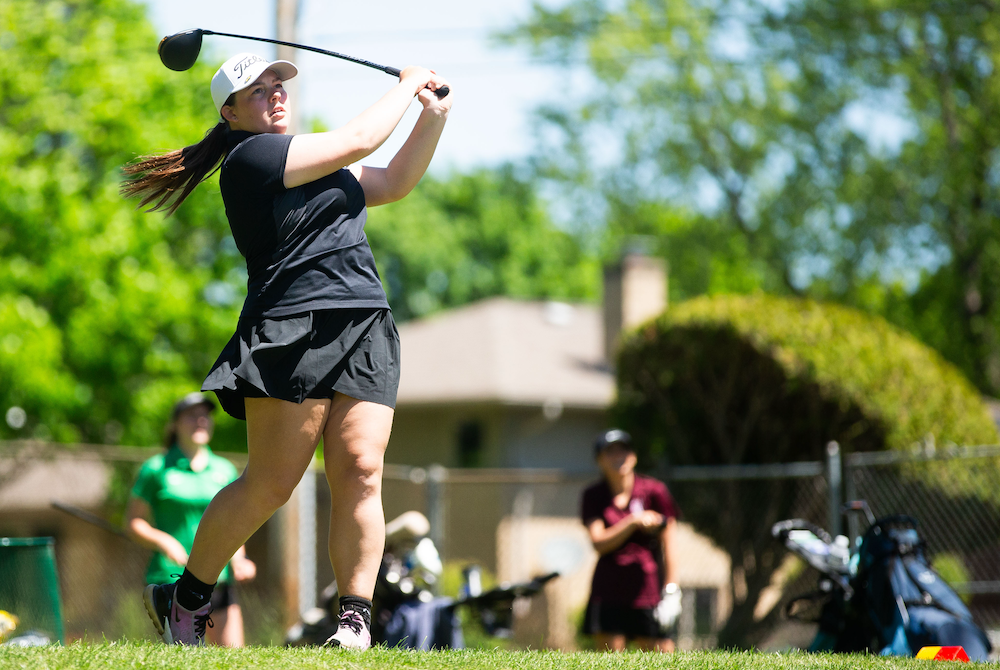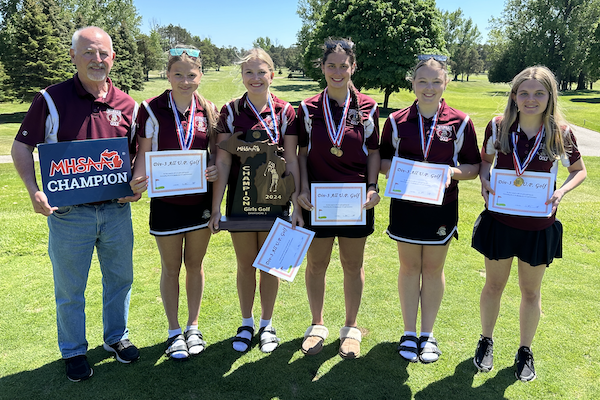
Classes Still Create Hoosier Hysteria
July 27, 2017
By Rob Kaminski
MHSAA benchmarks editor
This is the fourth part in a series on MHSAA tournament classification, past and present, that will be published over the next two weeks. This series originally ran in this spring's edition of MHSAA benchmarks.
Twenty years ago, Bloomington North High School won the Indiana High School Athletic Association boys basketball championship, defeating Delta 75-54 at the RCA Dome in Indianapolis.
The date, March 22, 1997, is at the same time revered and disdained by traditionalists in the state who saw it as the last schoolboy championship game the state would ever host.
That’s how devout the game of basketball, particularly interscholastic basketball, had become in the Hoosier state during the 87 years a state champion – one state champion, to be precise – was crowned.
Following that 1997 season, the IHSAA moved to a four-class system for its roundball tournaments, like so many of its state association counterparts had done years earlier.
It would be shocking to find more than a small percentage of current high school basketball players around the country unfamiliar with the iconic movie Hoosiers, even though the film is now more than 30 years old.
And, the storyline for that blockbuster unfolded more than 30 years prior to its release, when small-town, undermanned Milan High School defeated Muncie Central High School 32-30 in the 1954 IHSAA title game.
Perhaps it’s because of the David vs Goliath notion, or the fame of the movie that replaced Milan with the fictional Hickory and real-life star Bobby Plump with Hollywood hero Jimmy Chitwood, or the simple fact that Indiana had something other states didn’t.
Whatever the reason, plenty of opposition remains to this day to basketball classification in the state.
The fact is, the small rural schools were regularly being beaten handily by the much larger suburban and city schools as the tournament progressed each season.
Small schools also were closing at a rapid rate following the state’s School Reorganization Act in 1959, as students converged on larger, centralized county schools. From 1960 to 2000, the number of schools entering the tournament dropped from 694 to 381, and in 1997 a total of 382 schools and 4,584 athletes began competition at the Sectional level (the first level of the IHSAA Basketball Tournament).
It was at the entry level of the tournament where school administrators felt the pain of the new class system, but not necessarily for the same nostalgic reasons as the fans who either attended or boycotted the tournament.
At the Sectional round of the tournament, the IHSAA was culling just 2 percent of the revenue, with the participating schools splitting the balance. So, when Sectional attendance dropped by 14 percent in that first year of class basketball, many schools realized a financial loss. It was money they had grown to count on in prior years to help fund various aspects of the department.
Schools cumulatively received more than $900,000 from Sectional competition in 1998, but that total was down from more than $1 million in the last year of the single-class tournament.
Yet, the current format provides a great deal more opportunity and realistic chances at championship runs for schools of all enrollments.
To date, 60 additional teams have championship or runner-up trophies on display in school trophy cases around Indiana.
That was the mission in front of then-IHSAA commissioner Bob Gardner (now National Federation executive director) once the board made its decision: to give thousands more student-athletes the opportunity for once-in-a-lifetime experiences.
As any statistician knows, figures can be manipulated to tell any side of a story. Declining attendance in year one of class basketball is such a number.
The truth is tournament attendance had been on a steady downward spiral since its peak of just over 1.5 million in 1962. By the last single-class event in 1997, the total attendance was half that.
The challenge then and today, as it is for all state associations, is to find that delicate balance for those holding onto tradition, those holding onto trophies, and the number of trophies to hand out.
Editor’s Note: Stories from the Fort Wayne Journal Gazette in 1998 and from a 2007 issue of Indianapolis Monthly provided facts in this article.

Pederson Wins Memorably, Ontonagon Ascends Again in 'Phenomenal' Fashion
By
Jason Juno
Special for MHSAA.com
May 30, 2024
ESCANABA – Big Bay de Noc’s Camryn Pederson carded an 89 on Thursday to win the Upper Peninsula Division 3 Final individual champion and become the first U.P. champion to clear 90 since 2019.
“It feels really good,” she said. “I tried my best to golf as good as I could today, and I’m really glad that it came out the way it was. It’s a good way to end my senior year.”
She said she liked the open course that was low on hazards at the Escanaba Country Club. And she did most things well during her round Thursday.
“I think I minimized my putts. I only one or two-putt most of the holes,” Pederson said. “And my drives were really good.”
She became the second golfer from Big Bay de Noc to win a U.P. Finals individual golf title. Samantha Guertin won Division 3 in 2006 with a 90.
Pederson’s team was seeking its first title since 2005 after finishing runner-up last year, but finished second to a school where girls golf has pretty much always been strong – Ontonagon.
 When the MHSAA first separated the U.P. Finals into separate classes, Ontonagon won the first 10 Class C-D championships, from 1978 to 1987. When Class D got its own U.P. championship tournament, the Gladiators girls won the first four, part of a five-year run of titles from 1994 to 1998. When classifications changed again in 2001, and the name of the smallest group of schools changed from Class D to Division 3, Ontonagon didn’t stop winning, racking up seven more Finals championships.
When the MHSAA first separated the U.P. Finals into separate classes, Ontonagon won the first 10 Class C-D championships, from 1978 to 1987. When Class D got its own U.P. championship tournament, the Gladiators girls won the first four, part of a five-year run of titles from 1994 to 1998. When classifications changed again in 2001, and the name of the smallest group of schools changed from Class D to Division 3, Ontonagon didn’t stop winning, racking up seven more Finals championships.
On Thursday, the Gladiators made it eight wins in Division 3 and 23 overall.
Two of their golfers finished under 100 – runner-up Madyson Pantti carded a 94, and Sam Bailey had a 98. All five finished among the top 10 individuals. Summer Stites’ 100 was good for a fourth-place tie, and Olivia Lockhart and Shayna Stites tied for 10th with 108s.
It was the first U.P. Finals golf championship for all of them, including coach Jim Jessup. The Gladiators’ last team wins came with back-to-back titles in 2018 and 2019.
Ontonagon repeated as Copper Mountain Conference champion this year. The Gladiators had finished third last season at the U.P. Division 3 Final and outshot Big Bay de Noc on Thursday by eight strokes, 400-408. Ontonagon shot 36 strokes better than at last season’s Final, and every golfer shot under 110, which Jessup called “phenomenal.”
“I think the girls just worked really hard to better themselves,” he said. “Their stroke play was better, their consistency was better.”
Pantti improved her score by eight strokes from last year’s Final. The junior will have another shot at an individual championships in 2025, but she had a lot to be proud of this time with her runner-up finish that led the Gladiators to a team title.
“I’m really excited,” she said. “It was something that we’d been looking forward to all season. We’ve done good in a lot of our meets, and I thought this was a really good year for us.”
PHOTOS (Top) Big Bay de Noc's Camryn Pederson follows her drive on No. 4 on Thursday at Escanaba Country Club. (Middle) Ontonagon celebrates its latest girls golf Finals championship. (Photos by Jason Juno.)

